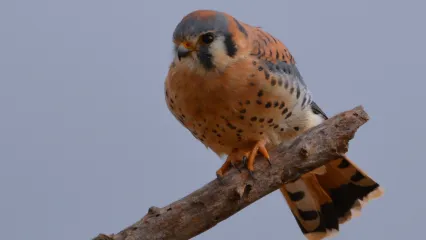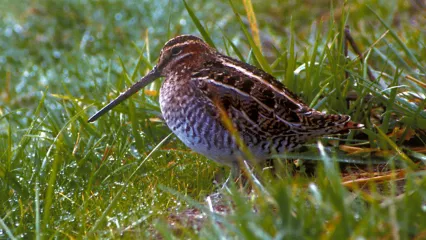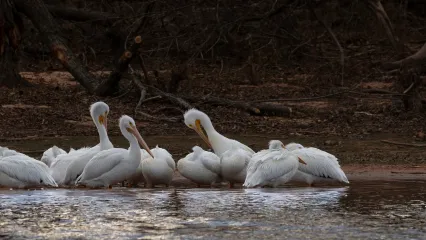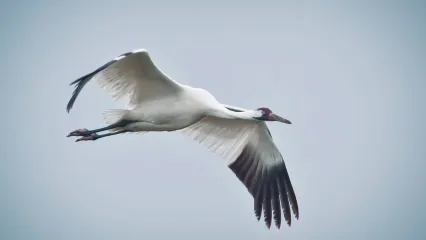
Description
American Kestrels (Falco sparverius) are one of the smallest falcons in North America. The bird is sleek, swift, predatory and well camouflaged. Many know it by its other name - the sparrow hawk.
Like most falcons the American kestrel has characteristic falcon maskings, often called a hood and moustache. Their short, hooked beak is built for tearing the flesh of their prey. American kestrels have long, narrow wings perfectly designed for speed and maneuverability. They have white on either side of their face, and a white and black-streaked breast and belly. The kestrel's wings are a dark gray-blue with white and black streaking and spots. They are reddish in color along their backs and tail, with the same camouflaging dark streaks found on their wings. Kestrel tail feathers also are banded in black and white.
You may spot the aerodynamic acrobatics of the American kestrel on the hunt nearly anywhere across Oklahoma, so the next time your at you favorite fishing hole or at the park, take a look around to see just what may be flying by. You may catch a glimpse of one of our state's most interesting predators.
Size
At only nine inches tall, this fierce raptor is capable of snatching large insects, birds and bats out of the air as well as rodents and lizards from the ground. Their ability to scan the ground in almost hover-like motion, their heads outstretched, in search of a meal make them a formidable predator.
Habitat
From the tree lines in Alaska all the way to South America, American kestrels live in one area year round and do not migrate like other birds of prey. They will inhabit nearly any terrain and are very adaptable. They do, however, tend to shy away from heavily forested areas, often preferring open spaces. American kestrels can be seen atop telephone wires or barbwire fences, from which they can swoop down after rodents and grasshoppers.
Life Cycle
Kestrels are not social birds until mating season. In mid April to early June, the males and females will begin pairing up and sharing joint territories. Females will mate with several suitors before finally settling on one. Three to seven eggs are laid, and females take responsibility for most of the incubation.
Kestrels often build their nests in hollowed logs or old woodpecker holes. They even build nests in building crevices and old rodent holes in riverbanks. Kestrel chicks are white or grey when hatched and grow their rust colored coat of feathers three weeks later. The chicks will leave the nest 30 days after hatching, but the family will remain together for a few months.


